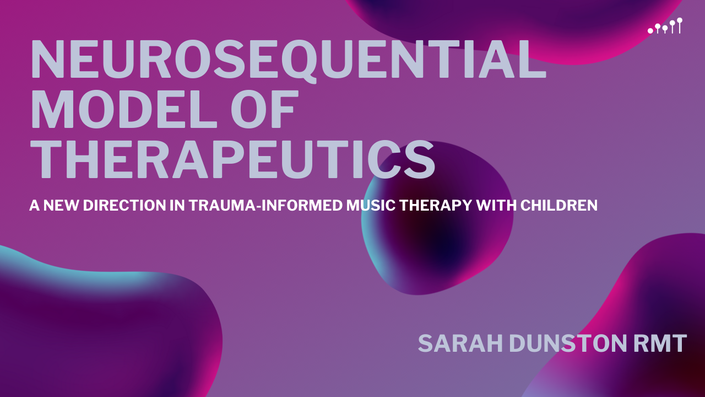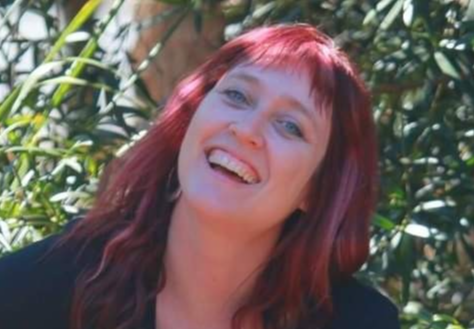
The Neurosequential Model of Therapeutics
A new direction for trauma informed music therapy
Watch Promo
Trauma-Informed Music Therapy for Children: Applying the Neurosequential Model of Therapeutics
For music therapists supporting children with complex trauma, understanding how trauma shapes brain development—and how music can support healing—is essential to delivering effective, developmentally appropriate care.
In this insightful and practical tutorial, registered music therapist Sarah Dunston introduces the application of Dr. Bruce Perry’s Neurosequential Model of Therapeutics (NMT) within music therapy. Grounded in contemporary research on childhood trauma and brain development, this tutorial equips you with the knowledge and tools to design trauma-informed interventions that foster regulation, relational capacity, and developmental growth.
You will learn how to:
- Structure music therapy sessions to support nervous system regulation
- Address dissociative responses and build relational safety
- Apply rhythmic, sensory-rich interventions grounded in the NMT framework
Sarah presents five key elements of a trauma-informed music therapy protocol, integrating rhythmic play, cross-lateral movement, and proprioceptive input to help children restore a sense of safety and connection.
This tutorial includes:
- A clear overview of trauma and its impact on child brain development
- A practical introduction to the Neurosequential Model and how it informs clinical decision-making
- Video demonstrations of music therapy interventions in action
Whether you’re refining your trauma-informed practice or seeking new frameworks to guide your work, this tutorial offers both theoretical grounding and practical insight to enhance your work with children who have experienced trauma.
Bonus content and optional learning activities are included to deepen your understanding and earn CMTE/CPD credits.
Your Instructor

Sarah Dunston is a Brisbane (Australia) based Registered Music Therapist (RMT) specialising in community work. She has worked in many different contexts across the life span including residential aged care, community mental health, adult disability, schools (Flexi, special and mainstream) and early childhood (capacity building and early intervention). She developed a special interest in trauma informed practice quite early in her career and it continues to be a driving force in all her work due to its focus on making all clients feel safe, seen and valued. Sarah began an MPhil on the topic of trauma informed early childhood music therapy in 2019 and this tutorial is a result of this study and her ongoing work in this space.
Earn up to 5+ CMTE/CPD credits quickly and easily!
Course Curriculum
-
Preview1. Introduction, overview and learning outcomes (7:04)
-
Start2. Addressing the dissociative response in young children (6:16)
-
Start3. How does trauma affect a child's developing brain? (5:43)
-
Start4. What does a trauma response look like? (2:49)
-
Start5. Neurosequential model of therapeutics: Intervention components (8:34)
-
Start6. Neurosequential model of therapeutics: Research (2:22)
-
Start7. Methods: Orientation & Connection (3:24)
-
Start7: Methods: Grounding rhythmic activity (7:01)
-
Start7. Methods: Dance & Movement (8:07)
-
Start7. Methods: Instrument Play (7:03)
-
Start7. Methods: Relaxation & winding down (4:09)
-
Start8. Summary, extra resources and bonus content activities (4:33)


Frequently Asked Questions
For MT-BC’s in the US and Canada you can submit your certificate in the workshops/independant learning category as an ‘other continuing education opportunity’. You can use the following CBMT Domains when you submit your CMTE certificate.
| CBMT Domains | ||||
| I Safety – 2. 10. | ||||
| II Referral, Assessment, Interpretation of Assessment and Treatment Planning – B 4a, b. D | ||||
| 2b. | ||||
| III Treatment Implementation and Documentation – A 1e. 2c, g, h, I, k, l, p, ff, gg, kk, zz, aaa, | ||||
| ddd, ggg. 3f. 4d, i. 5c, j, s, t, y, bb, ee, gg. | ||||
| IV Professional Development and Responsibilities – A 1. 2. 3. |

